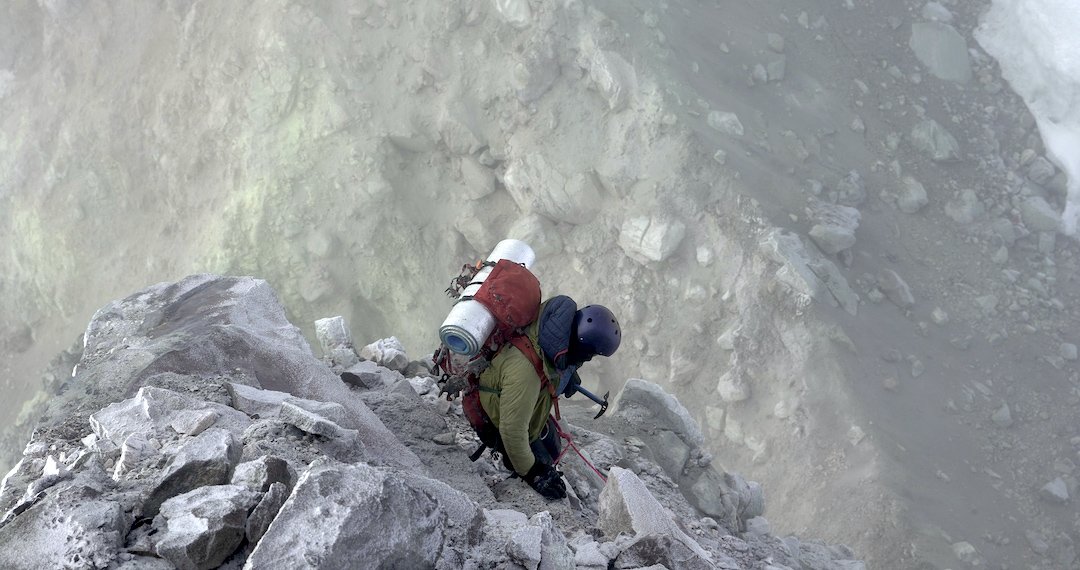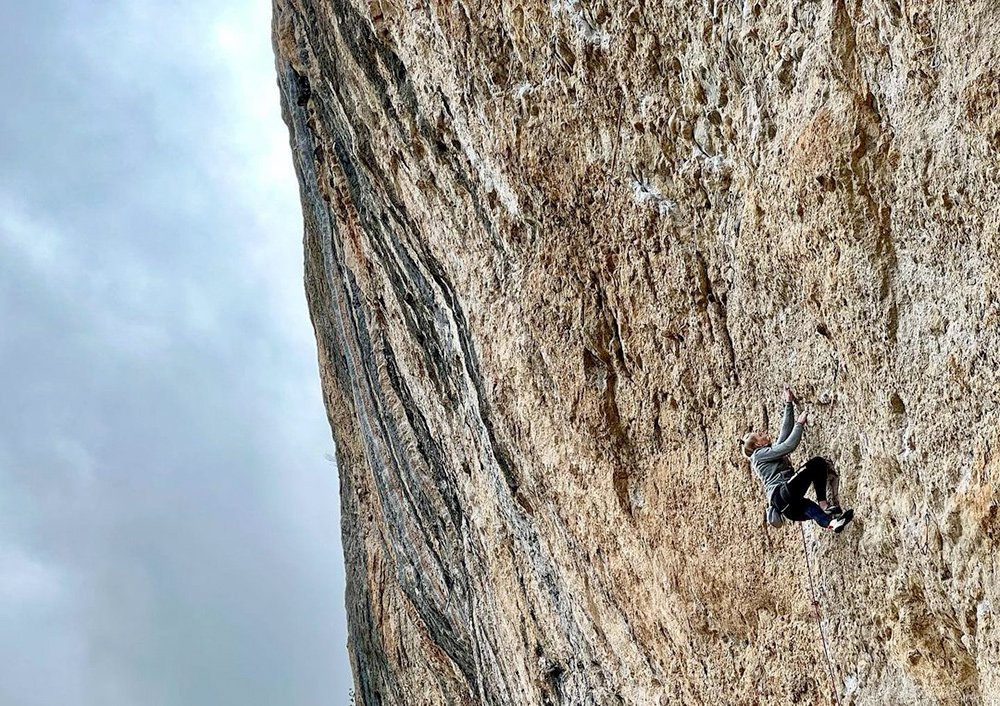AAJ 2022—AN INSIDER’S GUIDE
This edition of The Line features our annual look at hidden gems in the new AAJ that readers might have overlooked. (See also the “Buried Treasure” guides to AAJs 2020 and 2021.) As the editor-in-chief of the AAJ, these stories, photos, and quotes made me smile as we were preparing the 2022 book, and they still brighten my day whenever I see them. I hope you feel the same. — Dougald MacDonald, Editor
This online feature is made possible by Hilleberg the Tentmaker, presenting sponsor of the AAJ’s Cutting Edge Podcast.
Skiing the French Spur on the south face of Gasherbrum II. Photo by Tiphaine Duperier.
Snow Reports
Michael Gardner astride the Infinite Spur in Denali National Park in 2019. Photo by Sam Hennessey.
During the last few years, the AAJ has significantly increased its coverage of ski mountaineering. Sam Hennessey’s story about first ski descents, first ascents with skis on their backs, and extended climb-and-ski traverses in Denali National Park was perhaps the most eye-opening feature story of the 2022 AAJ. Unless you closely read the Climbs & Expeditions section, however, you might miss the incredible reports from Tiphaine Duperier: The Frenchwoman and her regular skiing partner, Boris Langenstein, are two of the leading high-altitude skiers in the world. In this edition alone, Tiphaine described five first descents on high peaks in Pakistan, including one on Gasherbrum II. And they’ll be back with more reports in the 2023 book, too: They skied a wild new descent route on Denali last spring.
The Expander
Everyone loves a clever route name, and the backstory on “The Expander” is superb: The name describes a link-up of four classic routes in the High Tatras of Poland that just recently was done for the first time in winter. In his AAJ story, Kacper Tekieli explains that the Expander is named after an old-fashioned “chest expander” exercise device, a contraption with two handles separated by three or four springy bands. Polish climber Maciej Gryczyński, who put up all four of the routes in the link-up during the 1960s, was nicknamed Sprężyna (“Spring”) because of his curly hair. Each of his four routes is also called Sprężyna. Connect the four springs, and what do you get? The Expander!
Home Field Advantage
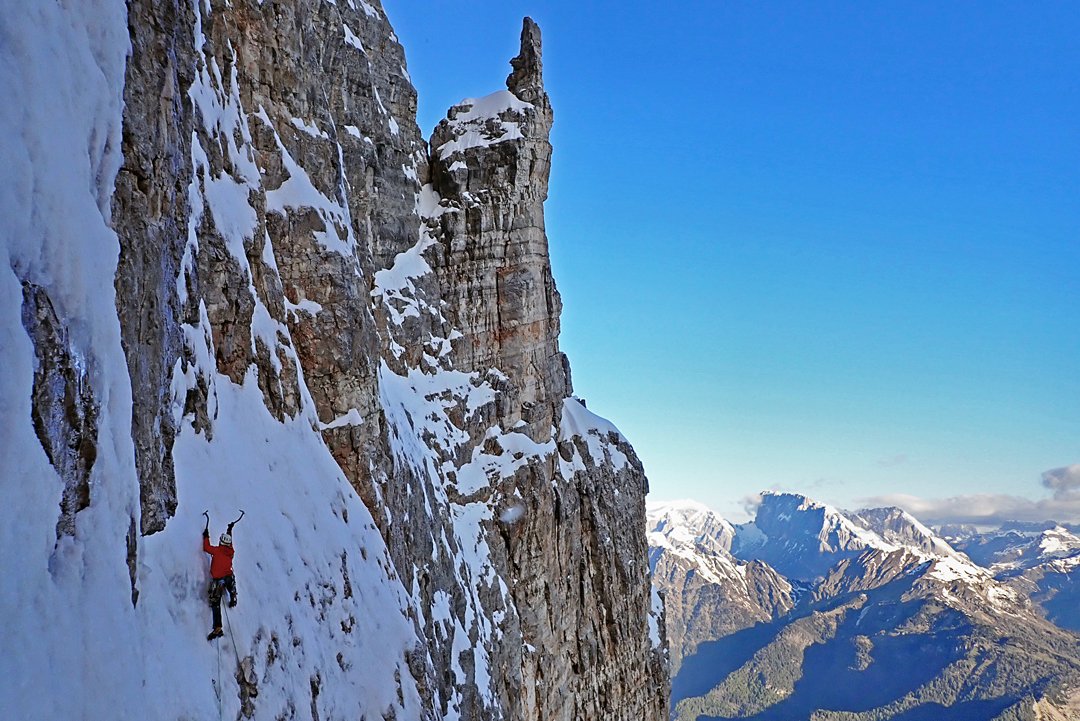
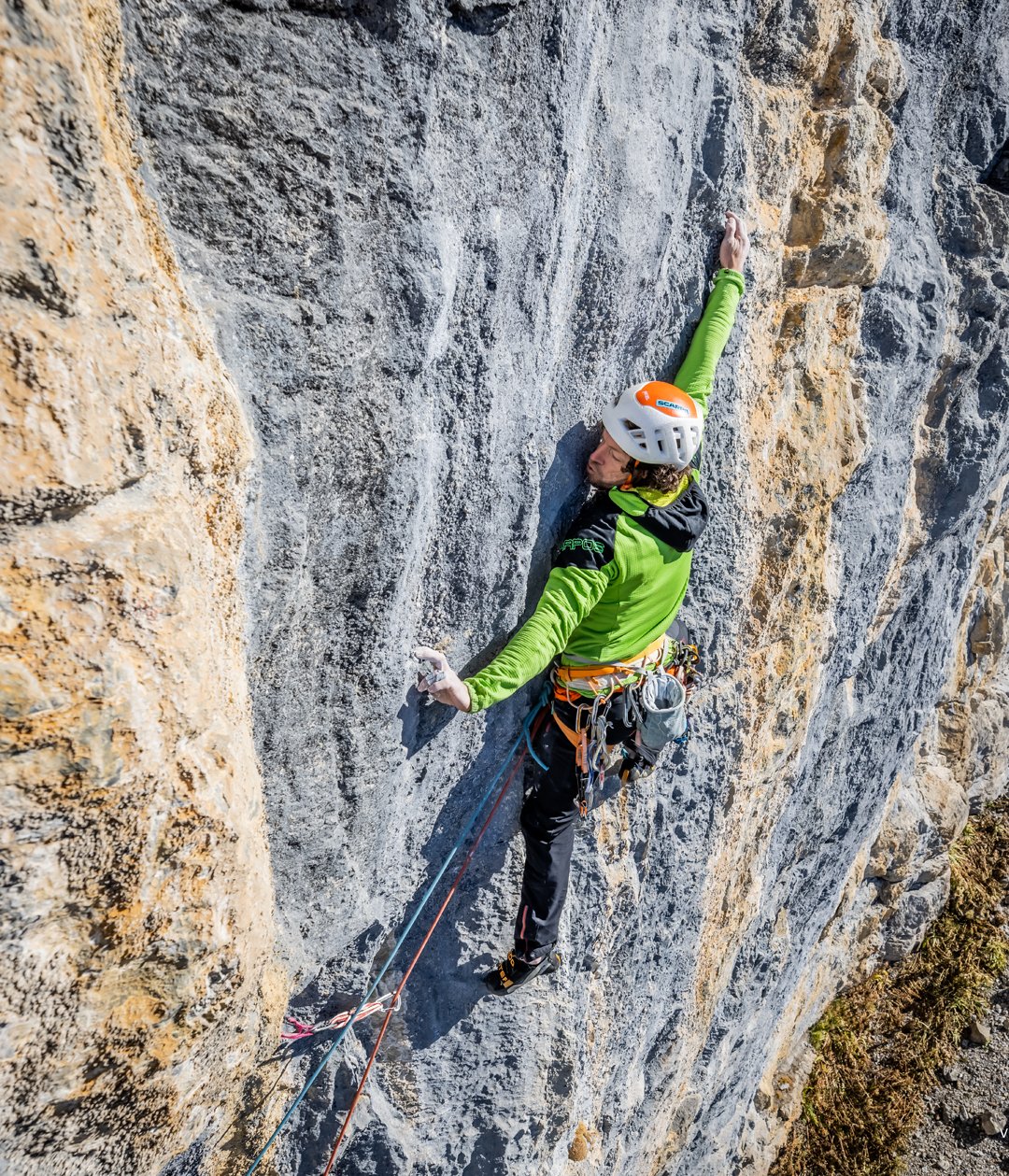
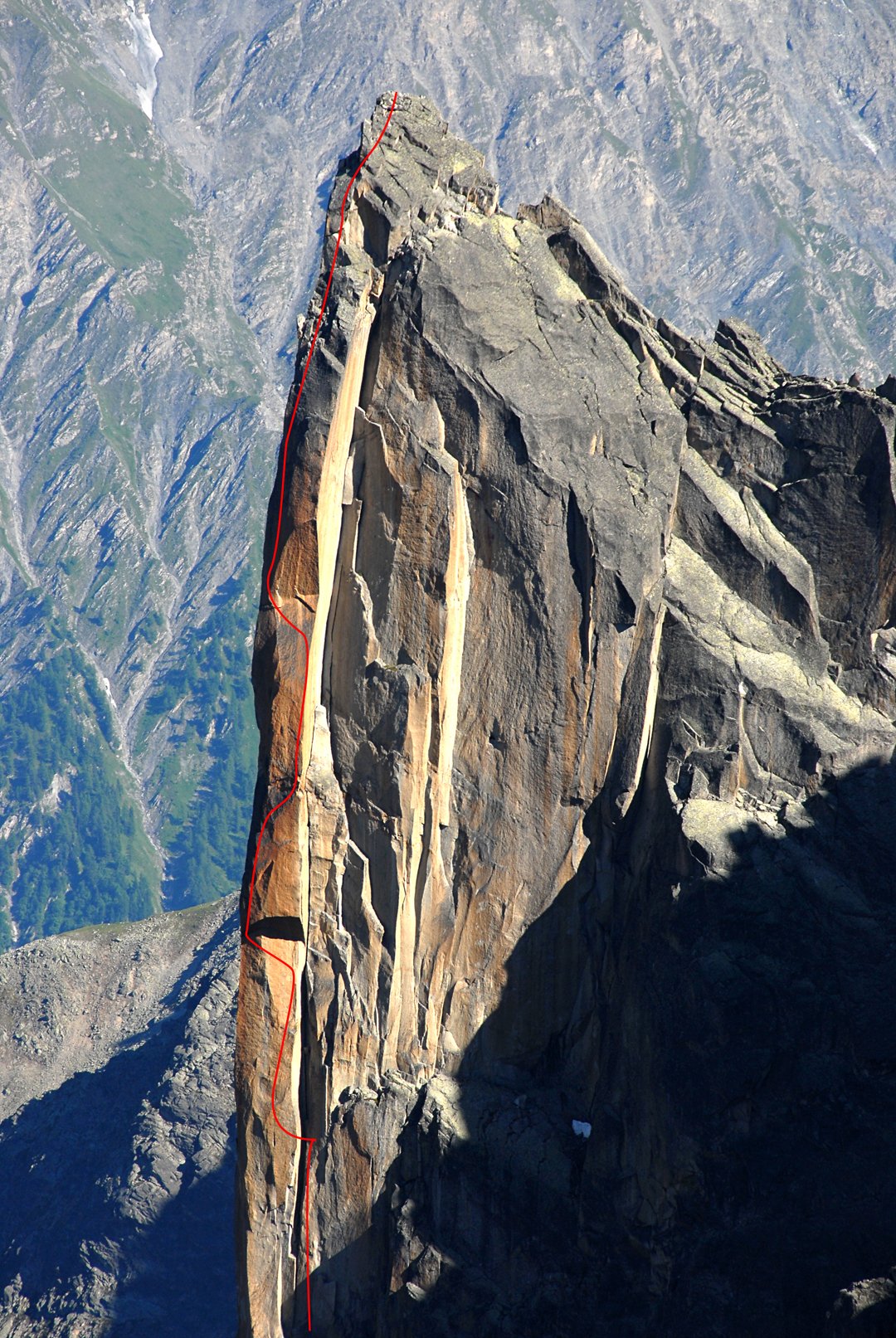
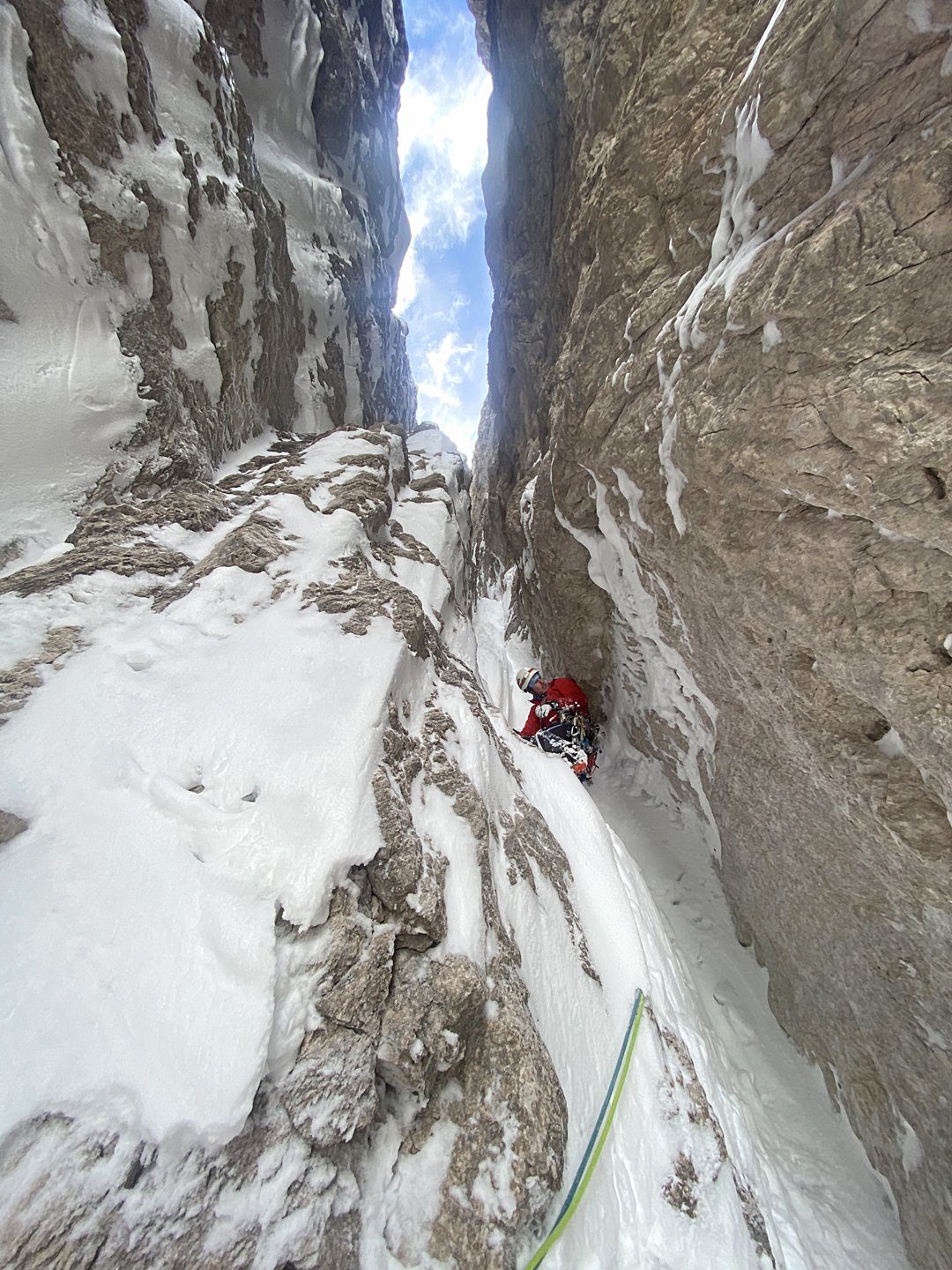
In recent years the AAJ has expanded coverage of important climbs in the Alps, recognizing that some of these first ascents are at least as long and difficult as those in the Greater Ranges, minus only the altitude. (For similar reasons, we’ve also expanded the New Zealand section.) We’re keen to highlight the ways that creative climbers are finding worthy challenges close to their homes, thus avoiding carbon-spewing plane flights. Plus, many of these climbs are just beautiful. To see what we mean, check out the photo gallery above, highlighting a few Alpine routes documented in the 2022 AAJ.
Mysterious Mountain
Top: Traversing from Pico Norte (ca 5,300m) to Pico La Cresta (5,200m) on day one of the Nevado del Huila traverse. Above: Indigenous guide Luis Silva Pete descends loose rock bathed in eerie volcanic smoke. Photos by Thomas Palmer.
Among the highlights of every AAJ are reports from little-known mountains all over the world. A standout in 2022 was British mountaineer Thomas Palmer’s story about the first known traverse of the four summits of Volcán Nevado del Huila, the highest volcano in Colombia. The glacier-covered massif’s frequent eruptions, extreme isolation, and Colombia’s ongoing conflicts make it a challenging destination, to say the least. In 2021, Palmer and an international team of climbers from France, Colombia, and a nearby Indigenous community made the traverse over two long days, encountering green volcanic smoke, the weird sound of dogs barking in the distance, and other mysteries. Read his story here.
Duly Noted
“Luck is a generous gift one cannot count on receiving, yet we rely on it every time we start up a big mountain.”
This superb quote comes from Brette Harrington’s report about a new route on Mt. Niblock in the Canadian Rockies, climbed with Dylan Cunningham. She was leading a low-angle slab, which became coated in verglas as she moved up, making it impossible to retreat. “I was quite afraid: unable to find a single placement of gear, knowing that the anchor below was an array of questionable pins. I angled toward the eastern skyline, where I landed a lucky strike and slung a frozen chockstone as my first piece of protection”—the generous gift in Harrington’s apt quote.
A Mini-Epic in the Sierra
Approaching the previously unnamed summit dubbed Marie Maynard Daly Peak, after the first African American woman to earn a Ph.D. in chemistry. Photo by Cameron Smith.
Cameron Smith and partners put up three routes on a previously unnamed formation in the High Sierra—despite an unfortunate moment on the second climb, when “one of my approach shoes emancipated itself from my harness while I led through a squeeze, never to be seen again.” Smith wrote in the AAJ that he had to make the several-mile trek back to camp with one climbing shoe taped to the front of his foot. Undeterred, he returned to the face the next day, now wearing a pair of dollar-store flip-flops he’d brought for camp; Smith made the approach and descent off the peak, and then hiked all the way out to Lone Pine in those flip-flops.
Perhaps inspired by the lifelong perseverance shown by Marie Maynard Daly, the late researcher (1921–2003) who was the first African American woman to receive a Ph.D. in chemistry in the United States, the climbers proposed naming this summit Marie Maynard Daly Peak.
Olympic gold medalist Janja Garnbret from Slovenia during the first 8c (5.14b) onsight by a woman: Fish Eye in Oliana, Spain. Photo by Roman Krajnik.
Milestones
“The climbs featured in the American Alpine Journal don’t occur in a vacuum—they reflect the broader evolution of climbing styles and performance around the world.” That’s the introduction to our annual Milestones section, which we added to the AAJ a few years ago, in an effort to truly reflect “the world’s most significant climbs.” The AAJ’s historical mission has been to document mountaineering and long rock climbs, and we could never print enough pages to add in-depth coverage of sport climbing, bouldering, and achievements on other short routes. Nevertheless, in our view, a cutting-edge sport climb or boulder problem is just as “significant” as a high-altitude first ascent, and over the long term, shorter climbs have profoundly shaped the ability and interests of alpine and big-wall climbers. With the Milestones section, the AAJ celebrates this fact.
This year in review and the AAJ’s Cutting Edge podcast are both presented by Hilleberg the Tentmaker. Visit Hilleberg’s website to order “The Tent Handbook,” their uniquely informative catalog.
Shop the AAJ Collection
Sign Up for AAC Emails
The Line is the newsletter of the American Alpine Journal (AAJ), emailed to more than 75,000 climbers each month. Find the archive of past editions here. Interested in supporting this online publication? Contact Billy Dixon for opportunities. Suggestions? Email us: [email protected].




